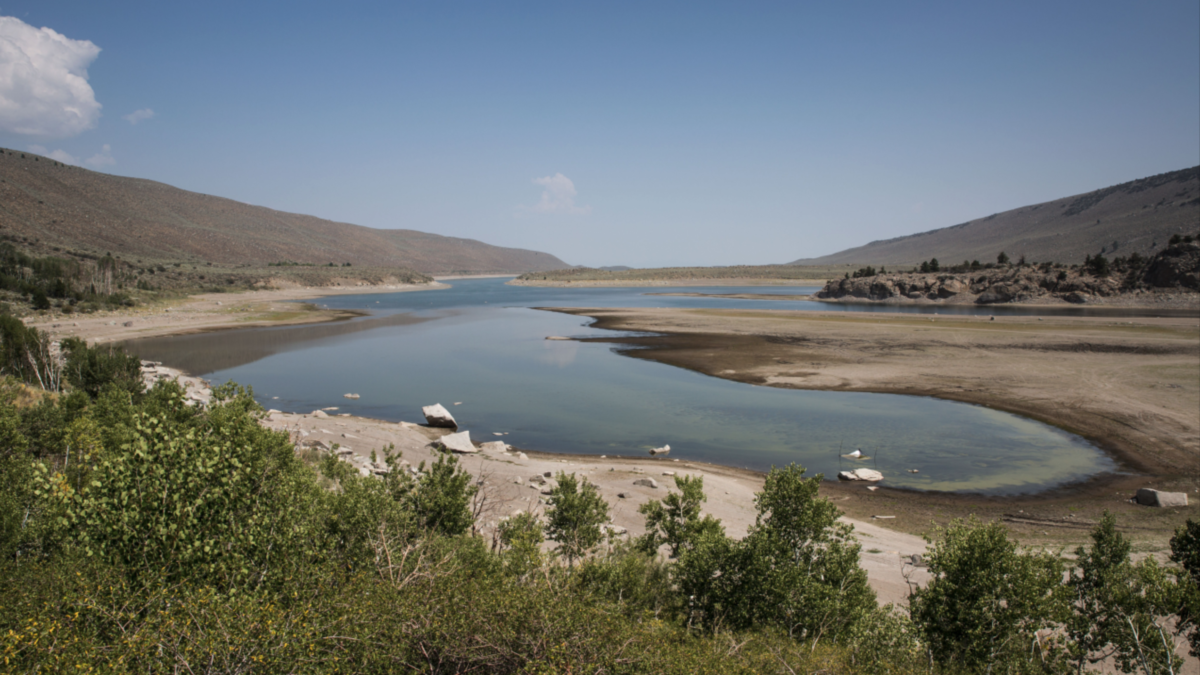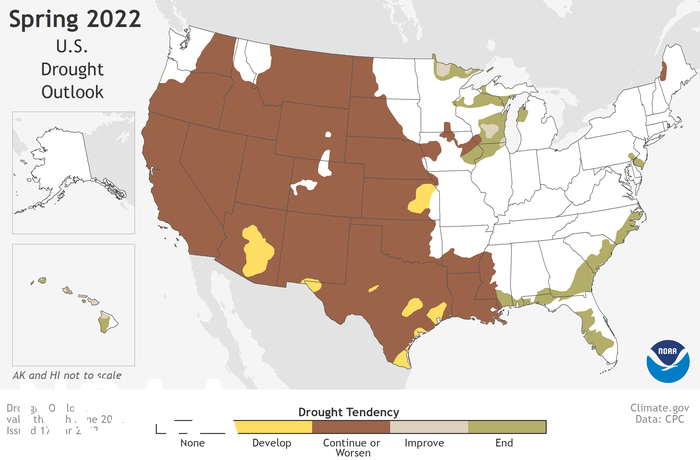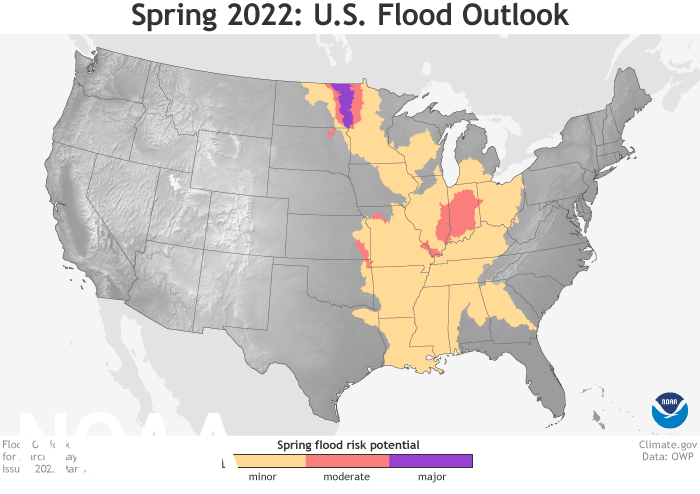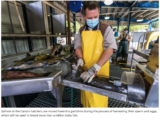
California’s Grant Lake, controlled by the Los Angeles Department of Water & Power, appears to be nearly empty on August 13, 2021: NAJ Screen Shot
Staff Report –
WASHINGTON, D.C. — As the Earth turns toward the first day of Spring on Sunday, March 20, climate scientists are forecasting the continuation of a trend from April to June of higher temperatures across most of the Unites States, from the Desert Southwest to the East Coast and north through the Midwest to the Canadian border, and a prolonged, persistent drought in the West where below-average precipitation is expected again this year.
That’s according to the National Oceanic and Atmospheric Association’s annual Spring Outlook report, which does not specifically cite climate change due to global warming from the burning of fossil fuels for energy, although it is implied throughout the report.
“NOAA’s Spring Outlook helps build a more weather and climate ready nation by informing local decision makers and emergency managers of this spring’s hazardous weather, such as extreme drought,” said NOAA Administrator Rick Spinrad, Ph.D. “NOAA’s seasonal outlooks provide advanced warning of the conditions to come, enabling communities to make preparations that boost their resilience to these hazards.”
A short-term drought recently developed in a region stretching from North Carolina southward through parts of Florida, and dry conditions will bring an elevated risk of wildfires across the Southwest and southern Plains and north to the Central Plains, especially when high winds are present, according to NOAA’s Climate Prediction Center, part of the National Weather Service.
“Drought conditions in the Southwest are unlikely to improve until the late summer monsoon rainfall begins,” the report says.

This map depicts where there is a greater than 50% chance of drought persistence, development, or improvement based on short- and long-range statistical and dynamical forecasts during March 17 through June 30, 2022.
“Severe to exceptional drought has persisted in some areas of the West since the summer of 2020 and drought has expanded to the southern Plains and Lower Mississippi Valley,” said Jon Gottschalck, chief, Operational Prediction Branch, NOAA’s Climate Prediction Center. “With nearly 60% of the continental U.S. experiencing minor to exceptional drought conditions, this is the largest drought coverage we’ve seen in the U.S. since 2013.”
Animation: U.S. Climate Outlook for Spring 2022 (no audio)
More than half of the U.S. is predicted to experience above-average temperatures this spring, with the greatest chances in the Southern Rockies and Southern Plains. Below-average temperatures are most likely in the Pacific Northwest and southeast Alaska.
Above-average precipitation is most likely in portions of the Great Lakes, Ohio Valley, mid-Atlantic and the west coast of Alaska, while below-average precipitation is forecast for portions of the Central Great Basin, Southwest, Central and Southern Rockies and Central and Southern Plains, eastward to the Central Gulf Coast.

This map depicts the locations where there is a greater than 50% chance of moderate or minor flooding during March through May, 2022.
There is a minor-to-moderate flood risk throughout much of the eastern half of continental U.S., including the Southeast, Tennessee Valley, lower Mississippi Valley, Ohio Valley, and portions of the Great Lakes, upper Mississippi Valley, and middle Mississippi Valley. An above-normal ice breakup and flood potential is also present in Alaska.
“Due to late fall and winter precipitation, which saturated soils and increased streamflows, major flood risk potential is expected for the Red River of the North in North Dakota and moderate flood potential for the James River in South Dakota,” said Ed Clark, director, NOAA’s National Water Center.
Spring snowmelt in the western U.S. is unlikely to cause flooding.
NOAA’s National Hydrologic Assessment evaluates a number of factors, including current conditions of snowpack, drought, soil saturation levels, frost depth, streamflow and precipitation.
NOAA produces seasonal outlooks to help communities prepare for weather and environmental conditions that are likely during the coming months to minimize impacts on lives and livelihoods. Heavy rainfall at any time can lead to flooding, even in areas where the overall risk is considered low. Rainfall intensity and location can only be accurately forecast days in the future, therefore flood risk can change rapidly.
Stay current with flood risk in your area with the latest official watches and warnings at weather.gov. For detailed hydrologic conditions and forecasts, go to water.weather.gov.













